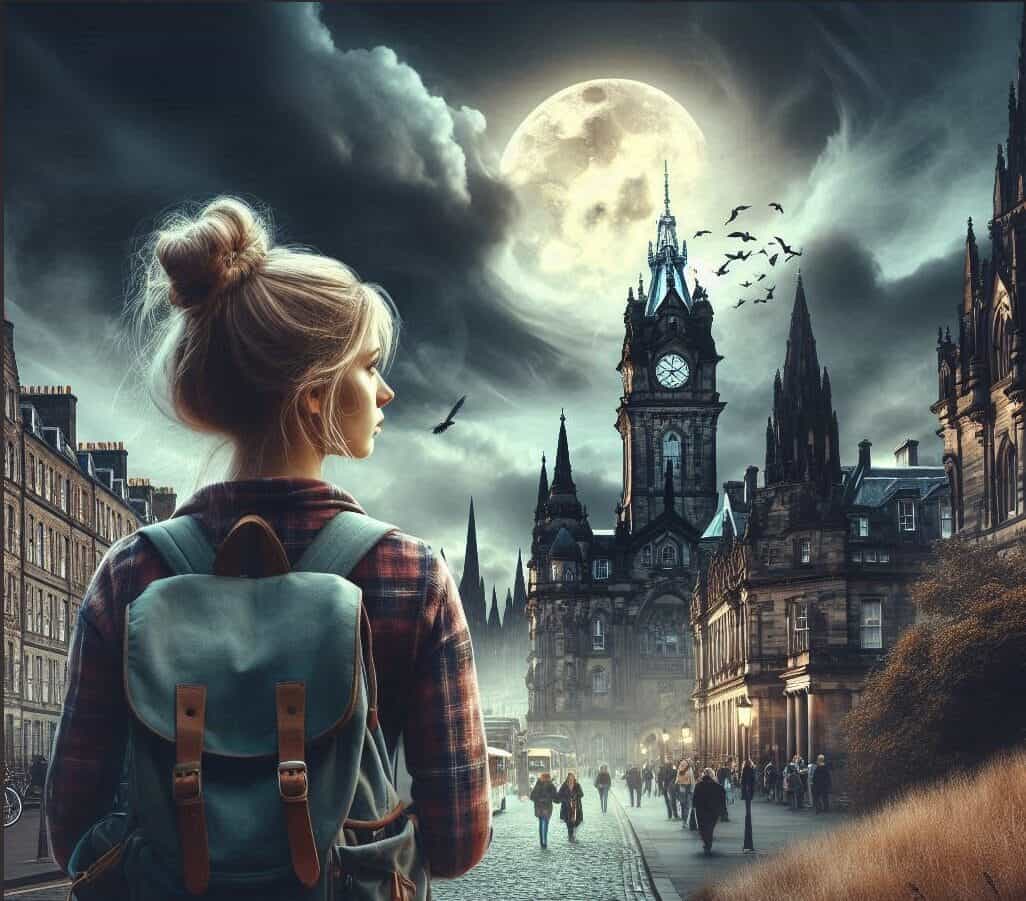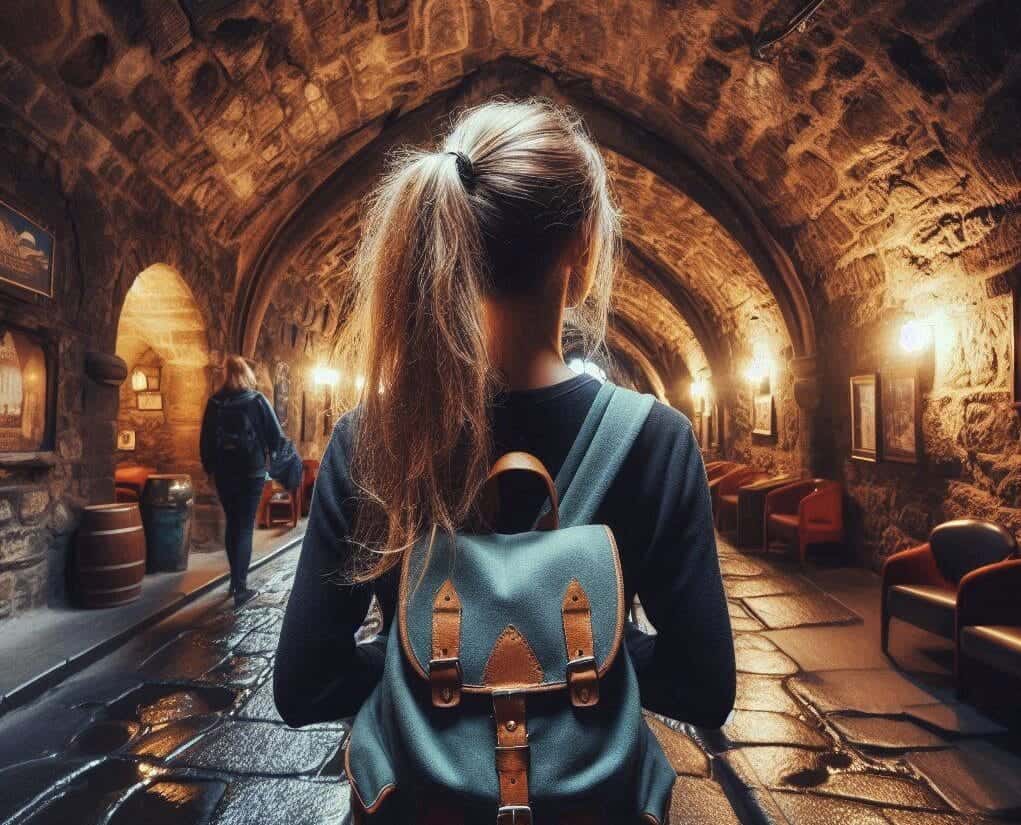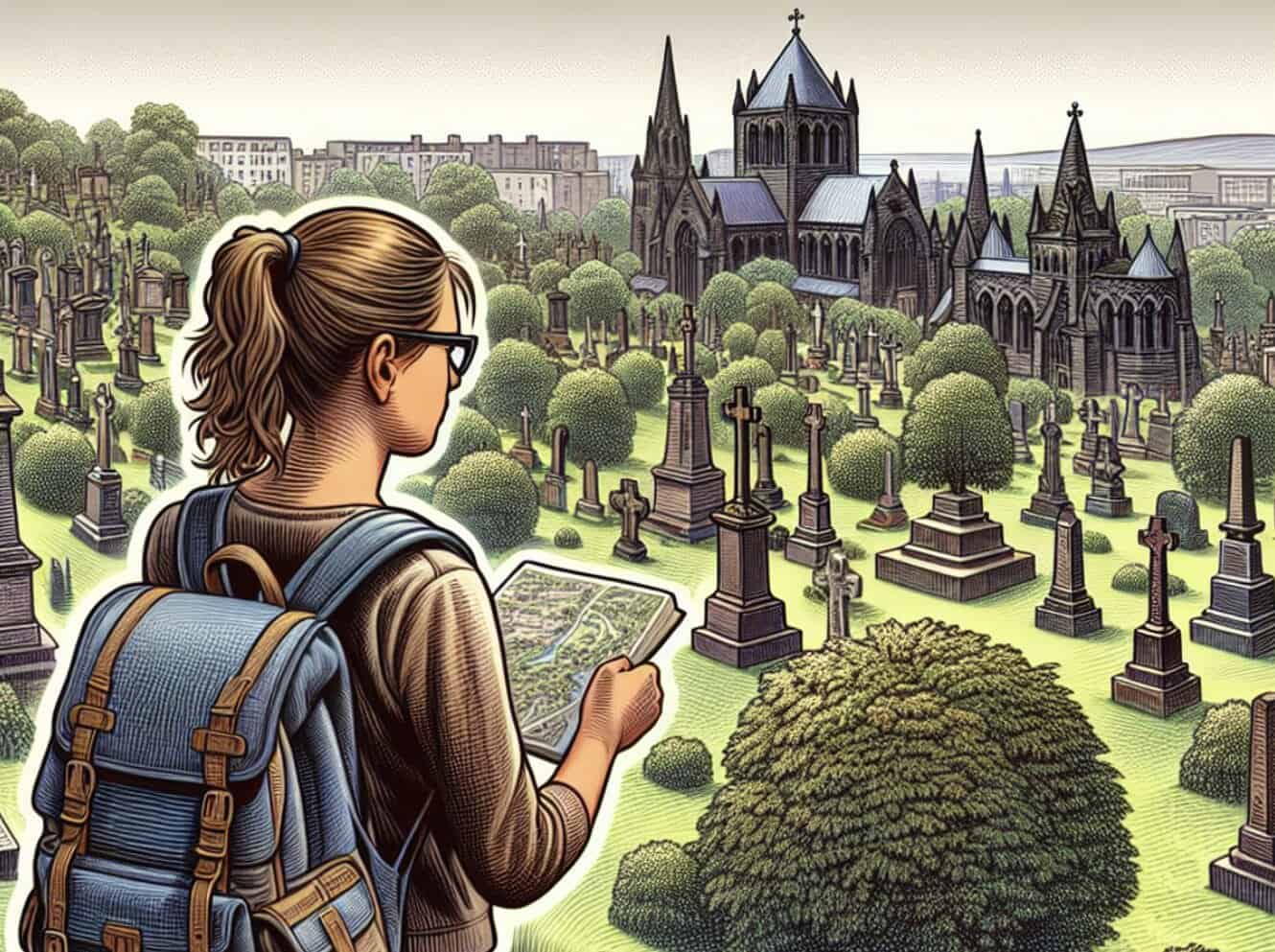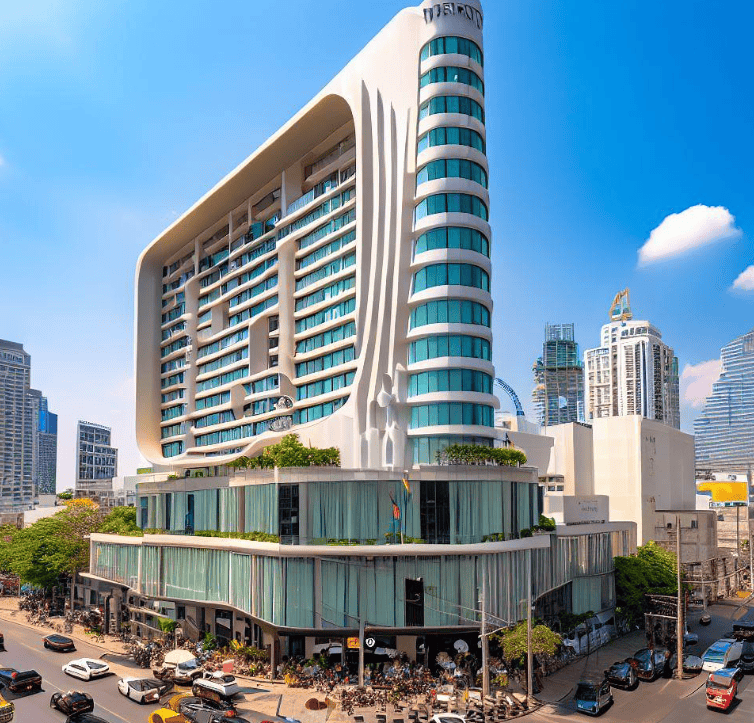Welcome to the spine-tingling world of Scotland’s haunted tours! Have you ever wondered what lurks in the shadows of ancient castles or whispers through the misty glens?
Scotland’s rich tapestry of history and folklore weaves a captivating tale of ghosts, ghouls, and things that go bump in the night. Known for its high number of reported ghost sightings, Scotland has earned a reputation as one of the most haunted countries in the world.
From the cobblestone streets of Edinburgh to the windswept battlefields of Culloden, Scotland’s paranormal past beckons the brave and curious. What secrets do the underground vaults hold? Who haunts the halls of centuries-old castles? These questions and more await answers on your ghostly journey through time and tales.
Let’s get started on an unforgettable adventure through Scotland’s most haunted locations! 👻
- Edinburgh: The Ghost Capital of Scotland
- Stirling Castle: Royalty and Restless Spirits
- Glamis Castle: Scotland's Most Haunted Castle
- Culloden Battlefield: Echoes of a Bloody Past
- Mary King's Close: Edinburgh's Underground City
- Crathes Castle: Aberdeenshire's Haunted Gem
- Dunnottar Castle: Coastal Cliffs and Restless Souls
- Glasgow Necropolis: City of the Dead
- Planning Your Scotland Haunted Tour
- Takeaways
Edinburgh: The Ghost Capital of Scotland
The Royal Mile’s spectral residents
Edinburgh’s Royal Mile, stretching from Edinburgh Castle to Holyrood Palace, teems with ghostly tales. This historic thoroughfare has witnessed centuries of drama, intrigue, and tragedy, leaving an indelible mark on the city’s supernatural landscape.
One of the most famous spectral residents is the ghost of Half-Hangit Maggie Dickson. In 1724, Maggie was hanged for concealing a pregnancy but miraculously survived the execution. Today, visitors report seeing her ghostly figure near the Grassmarket, where her “execution” took place.
Another notable spirit is that of the Deacon Brodie, a respected craftsman by day and a notorious burglar by night. His double life inspired Robert Louis Stevenson’s “Dr. Jekyll and Mr. Hyde.” Tourists often claim to see Brodie’s ghost near the tavern that bears his name, perhaps still seeking redemption for his crimes.

Exploring the underground vaults
Beneath the bustling streets of Edinburgh lie the eerie South Bridge Vaults. These subterranean chambers, once home to Edinburgh’s poorest residents and illicit businesses, now host a different kind of occupant – ghosts.
The most infamous entity in the vaults is the Watcher, a malevolent presence that visitors describe as a dark, oppressive force. Many tourists report feeling watched, touched, or even pushed while exploring these dank corridors.
Another chilling encounter awaits in the White Room, where the spirit of a young boy named Jack is said to reside. Visitors often leave toys for Jack, only to find them moved or arranged differently upon their next visit.
Greyfriars Kirkyard and the Mackenzie Poltergeist
Greyfriars Kirkyard, while beautiful by day, transforms into a hotbed of paranormal activity at night. This ancient cemetery is home to Edinburgh’s most violent poltergeist – the Mackenzie Poltergeist.
The poltergeist is believed to be the spirit of Sir George Mackenzie, a 17th-century judge known for his brutal persecution of Covenanters. Since 1999, there have been over 500 documented attacks attributed to this entity, ranging from unexplained bruises to loss of consciousness.
For the truly brave, the Black Mausoleum – Mackenzie’s final resting place – is the epicenter of the haunting. Visitors report cold spots, strange mists, and even physical assaults within its confines.
Notable Hauntings in Edinburgh
| Location | Ghost | Description |
|---|---|---|
| Royal Mile | Half-Hangit Maggie | Woman who survived her hanging |
| Royal Mile | Deacon Brodie | Craftsman turned burglar |
| South Bridge Vaults | The Watcher | Malevolent presence |
| South Bridge Vaults | Jack | Playful child spirit |
| Greyfriars Kirkyard | Mackenzie Poltergeist | Violent entity, known for physical attacks |
Edinburgh Castle, perched atop the Royal Mile, holds the record for the most reported paranormal phenomena in Scotland. The castle’s dungeons, in particular, are a hotspot for ghostly encounters, with reports of spectral prisoners and phantom bagpipers echoing through the ancient halls.
Stirling Castle: Royalty and Restless Spirits
The Green Lady and Her Tragic Tale
The Green Lady of Stirling Castle is one of Scotland’s most famous ghosts. Legend says she was a servant to Mary, Queen of Scots, who saved the queen from a fire in her bedchamber. Tragically, the servant perished in the flames.
Visitors often report seeing a green mist or a woman in a green dress wandering the castle corridors. Some claim to have felt a gentle touch or heard soft whispers when no one else is around. The Green Lady seems to be a benevolent spirit, perhaps still fulfilling her duty to protect the castle’s inhabitants.
Interestingly, the appearance of the Green Lady is said to precede significant events. Castle staff have noted increased sightings before important visits or during times of change, adding an air of mystique to this spectral guardian.
Ghostly Bagpipes and Phantom Soldiers
The haunting sound of bagpipes often echoes through Stirling Castle, even when no living piper is present. Many believe this to be the ghost of a piper who disappeared in the castle’s tunnels centuries ago. The story goes that he was sent to explore the underground passages but never returned. Only the fading sound of his pipes was heard.
Phantom soldiers are another common sight at Stirling Castle. Visitors have reported seeing men in full Highland regalia patrolling the battlements or standing guard at doorways. These apparitions often vanish when approached, leaving behind only a cold spot in the air.
During the castle’s long history, it has seen numerous battles and sieges. Some theorize that these spectral soldiers are the echoes of those who died defending the castle, their spirits still bound to their duty even in death.
The Pink Lady of the Castle Tower
The Pink Lady is a more mysterious figure in Stirling Castle’s ghostly pantheon. She’s often seen in the upper reaches of the castle, particularly around the old chapel. Unlike the Green Lady, the Pink Lady’s identity remains unknown, adding to her enigmatic allure.
Some visitors have reported seeing a beautiful young woman in a pink gown gliding through the chapel or gazing out from the tower windows. Others have felt a sudden chill or smelled a faint floral perfume when passing through certain areas of the castle.
Local folklore suggests the Pink Lady might be the spirit of a woman searching for her lost love. Her appearances are often associated with feelings of melancholy or unrequited love, touching the hearts of those who encounter her.
Ghostly Residents of Stirling Castle
| Ghost | Location | Characteristics |
|---|---|---|
| The Green Lady | Throughout the castle | Appears as green mist or woman in green dress, protective presence |
| Phantom Piper | Castle tunnels | Heard but not seen, playing ghostly bagpipe music |
| Spectral Soldiers | Battlements and doorways | Appear in Highland regalia, vanish when approached |
| The Pink Lady | Upper castle areas, chapel | Young woman in pink gown, associated with feelings of lost love |
Stirling Castle sits atop Castle Hill, an ancient volcanic crag. This strategic location has made it a key military stronghold throughout Scottish history. The castle has withstood at least eight sieges, including several during the Wars of Scottish Independence. This tumultuous past contributes to its reputation as one of Scotland’s most haunted locations.
Glamis Castle: Scotland’s Most Haunted Castle
The Monster of Glamis legend
Glamis Castle harbors one of Scotland’s most intriguing and disturbing legends – the Monster of Glamis. According to whispered tales, the monster was a deformed heir to the Bowes-Lyon family, hidden away in a secret chamber within the castle walls.
Rumors suggest that the “monster” was born in the early 19th century, severely disfigured and kept isolated from the world. Some accounts describe a barrel-chested creature with tiny arms and legs, while others speak of an inhuman beast. The family allegedly swore a pact of secrecy, with only the Earl, his heir, and the estate steward knowing the truth.
Visitors to Glamis Castle often report strange noises coming from within the walls, particularly at night. Some claim to have seen shadowy figures darting between rooms or peering from windows in areas of the castle that should be empty. The legend of the Monster of Glamis continues to captivate and horrify to this day.

Earl Beardie’s Eternal Card Game
Another famous ghost of Glamis Castle is Alexander Lindsay, 4th Earl of Crawford, better known as Earl Beardie. Legend has it that on a Saturday night, Earl Beardie was playing cards with his friends. As the clock struck midnight, marking the start of the Sabbath, his companions refused to continue playing.
Enraged, Earl Beardie declared he would play with the Devil himself if no one else would join him. Shortly after, a stranger in a long black cloak appeared, and they began to play. Servants reported hearing terrible noises and blasphemous oaths coming from the room. The next morning, Earl Beardie was found dead, his features twisted in horror.
Now, visitors to the castle claim to hear the sound of dice rolling and muffled voices coming from the old card room. Some have even reported seeing the ghostly figures of Earl Beardie and his demonic opponent, still locked in their eternal game.
The Grey Lady of the Chapel
The Grey Lady is one of Glamis Castle’s most frequently sighted spirits. She’s believed to be the ghost of Janet Douglas, Lady Glamis, who was burned at the stake for witchcraft in 1537 on trumped-up charges by King James V.
Visitors often report seeing the Grey Lady in and around the castle chapel. She appears as a tall, slender woman dressed in grey, her face hidden beneath a veil. Some accounts describe a feeling of profound sadness that accompanies her appearances, as if her unjust fate still weighs heavily upon her spirit.
Interestingly, the Grey Lady has been known to interact with the living. Castle staff have reported books mysteriously falling from shelves in the chapel, and some guests claim to have felt a gentle touch on their shoulder when no one else was present.
Ghostly Residents of Glamis Castle
| Ghost | Location | Characteristics |
|---|---|---|
| Monster of Glamis | Secret chamber | Unseen, causes strange noises within walls |
| Earl Beardie | Old card room | Sounds of dice and voices, apparition playing cards |
| The Grey Lady | Chapel and surroundings | Tall woman in grey, veiled face, associated with sadness |
Glamis Castle has a royal connection – it was the childhood home of Queen Elizabeth The Queen Mother and the birthplace of Princess Margaret. The castle’s rich history dates back to the 14th century, and it’s mentioned in Shakespeare’s play Macbeth as the site of King Duncan’s murder. This blend of real history and literary fame adds another layer to its ghostly reputation, making it a must-visit for any Scotland haunted tour enthusiast.
Culloden Battlefield: Echoes of a Bloody Past
Phantom Armies and Battle Cries
Culloden Battlefield, site of the last pitched battle on British soil, echoes with the ghosts of fallen soldiers. Visitors often report hearing the clash of swords, the thunder of cannons, and the anguished cries of wounded men, especially on the battle’s anniversary, April 16th.
Some tourists have described seeing spectral Highland warriors charging across the moor, their battle cries piercing the air. These apparitions typically vanish as quickly as they appear, leaving witnesses shaken and bewildered. The phantom army seems to reenact the tragic events of 1746, forever trapped in that fateful moment.
Interestingly, many of these sightings occur near the clan graves, where thousands of fallen Jacobites lie. Some theorize that the strong emotions and violent deaths associated with the battle have left an indelible mark on the landscape, creating a kind of supernatural time loop.
The Well of the Dead
The Well of the Dead, a small spring on the battlefield, holds its own chilling tales. Legend says that many wounded Jacobites crawled here to quench their thirst as they lay dying. Today, it’s said to be a focal point for paranormal activity.
Visitors to the well have reported feeling sudden drops in temperature, even on warm days. Some claim to have seen ghostly hands reaching out from the water, as if the spirits of the dead are still seeking relief. Others describe hearing whispered pleas for help in Gaelic when no one else is around.
Perhaps most unsettling are the accounts of water in the well turning blood-red on certain nights, particularly around the anniversary of the battle. While this phenomenon hasn’t been scientifically verified, it adds to the well’s eerie reputation.
Ghostly encounters in the Visitor Center
Even the modern visitor center isn’t immune to Culloden’s haunting atmosphere. Staff and guests alike have reported unexplainable occurrences within its walls, bringing the past into stark confrontation with the present.
Objects in the exhibition areas have been known to move on their own, particularly items related to specific soldiers. Some visitors have felt invisible hands touching them or tugging on their clothes, especially near displays of weapons or personal effects from the battle.
The most frequent reports involve a ghostly Highland soldier seen wandering the center. He’s often described as looking confused or lost, perhaps unaware that centuries have passed since the battle. Attempts to approach or speak to this figure invariably end with his sudden disappearance.
Paranormal Hotspots at Culloden Battlefield
| Location | Phenomena | Best Time to Visit |
|---|---|---|
| Main Battlefield | Phantom armies, battle sounds | April 16th (battle anniversary) |
| Clan Graves | Apparitions of Highland warriors | Dawn or dusk |
| Well of the Dead | Temperature drops, ghostly hands, whispers | Night, especially in April |
| Visitor Center | Moving objects, ghostly touches, Highland soldier apparition | Any time, more active after hours |
The Battle of Culloden lasted less than an hour but resulted in about 2,000 Jacobite casualties. This concentration of death and suffering in such a short time and confined space is believed to contribute to the intense paranormal activity reported at the site. Moreover, the battlefield is home to one of the largest war graves in Britain, adding to its somber and haunting atmosphere. For history buffs and ghost hunters alike, Culloden offers a unique and chilling glimpse into Scotland’s turbulent past.
Mary King’s Close: Edinburgh’s Underground City
The Plague Doctor’s Eerie Presence
Mary King’s Close, a network of underground streets beneath Edinburgh’s Royal Mile, harbors the chilling presence of a plague doctor. During the 17th century, these masked figures roamed the streets, attempting to treat victims of the Black Death. Today, their ghostly counterpart continues his eternal rounds.
Visitors often report glimpsing a tall, cloaked figure with a beaked mask turning corners or disappearing through walls. The distinctive tap of his cane on the cobblestones echoes through the narrow passageways, sending shivers down spines. Some tourists have even claimed to smell the pungent herbs used to fill the mask’s beak, believed to ward off the plague’s miasma.
Interestingly, encounters with the plague doctor’s spirit seem to spike during times of public health concerns. Whether this is due to heightened awareness or the ghost’s renewed sense of purpose remains a mystery. Regardless, his presence serves as a haunting reminder of Edinburgh’s dark medical history.

Annie’s Room and the Ghostly Child
One of the most heart-wrenching stories in Mary King’s Close revolves around Annie’s Room. In the 1990s, a Japanese psychic claimed to have encountered the spirit of a young girl named Annie, who tugged at her leg and complained of being cold and lonely.
Since then, visitors have left toys and trinkets for Annie, creating a colorful shrine in stark contrast to the gloomy surroundings. Many report feeling a sudden chill or sensing a small presence near them in this room. Some have even captured orbs or small, child-like figures in photographs.
Psychics who have visited the close often describe Annie as a victim of the plague, abandoned or orphaned during the outbreak. Her playful yet melancholy spirit seems to resonate with many visitors, making her room one of the most emotionally charged areas in Mary King’s Close.
Paranormal Investigations and Findings
Mary King’s Close has been the subject of numerous paranormal investigations, yielding intriguing results. Professional ghost hunters and scientific researchers alike have flocked to this underground time capsule, armed with an array of equipment.
Electronic Voice Phenomena (EVP) recordings have captured whispers and conversations in old Scots dialect, often unintelligible to modern ears. Electromagnetic field (EMF) detectors frequently spike in certain areas, particularly Annie’s Room and the former house of the Chesney family, where a male presence is often felt.
Perhaps most compelling are the consistent reports of physical sensations. Visitors and investigators alike have experienced sudden temperature drops, the feeling of being watched, and even gentle touches or pushes. These occurrences, combined with the close’s oppressive atmosphere, have cemented its reputation as one of Edinburgh’s most haunted locations.
Ghostly Residents of Mary King’s Close
| Ghost | Location | Characteristics | Common Experiences |
|---|---|---|---|
| Plague Doctor | Throughout the close | Tall figure with beaked mask | Visual sightings, sound of tapping cane, herbal smells |
| Annie | Annie’s Room | Young girl | Feeling of being touched, cold spots, orbs in photos |
| Chesney Family | Chesney residence | Male presence | EMF spikes, feeling of being watched |
Mary King’s Close was named after Mary King, a prominent businesswoman in the 17th century. This was unusual for the time, as closes were typically named after male property owners. The close was partially demolished and built over in the 18th century to create the Royal Exchange, now the City Chambers. This unique history of being “buried alive” adds to the eerie atmosphere and has fueled speculation about trapped spirits and residual hauntings. For history enthusiasts and ghost hunters, Mary King’s Close offers a rare opportunity to step back in time and experience the literal underbelly of Old Edinburgh.
Crathes Castle: Aberdeenshire’s Haunted Gem
The Green Lady of Crathes
Crathes Castle, a 16th-century tower house, is home to one of Scotland’s most famous spectral residents: the Green Lady. This ghostly figure has haunted the castle for centuries, particularly favoring the Green Lady’s Room on the castle’s upper floor.
Witnesses describe the Green Lady as a beautiful young woman in a green dress, often seen cradling an invisible infant. Legend says she was a servant girl who bore an illegitimate child to a member of the Burnett family, the castle’s owners. Some accounts claim she and the child were murdered to avoid scandal, while others suggest she died in childbirth.
Interestingly, in the 1800s, workers renovating the castle discovered the skeletal remains of a woman and child hidden beneath the hearthstone of the Green Lady’s Room. This grim discovery lends credence to the ghostly tales and has only intensified the Green Lady’s legend.
The Ghostly Face in the Fireplace
Another intriguing paranormal phenomenon at Crathes Castle is the mysterious face that appears in the fireplace of the Green Lady’s Room. Visitors and staff alike have reported seeing a distinct human face materializing in the patterns of the stone.
The face reportedly appears and disappears at random, sometimes visible for days, other times vanishing for months. Some believe it to be the face of the Green Lady herself, while others speculate it might be the visage of her child or her murderer.
Attempts to capture the face on camera have yielded mixed results. Some photographs show a clear facial structure, while others reveal nothing unusual. This inconsistency has only added to the mystery, fueling debates among paranormal enthusiasts about the nature of this ghostly manifestation.
Unexplained Sounds and Sightings
Beyond its famous Green Lady, Crathes Castle boasts a wealth of other paranormal activity. Visitors and staff frequently report unexplained sounds echoing through the castle’s halls, from phantom footsteps to disembodied voices engaged in hushed conversations.
The castle’s Victorian kitchen is a particular hotspot for ghostly activity. Staff members have reported the smell of freshly baked bread when the ovens haven’t been used in decades. Some have even claimed to see spectral servants going about their daily chores, oblivious to the passage of time.
In the castle grounds, the ancient yew hedges of the garden have been the site of numerous ghostly sightings. Visitors have reported glimpsing shadowy figures darting between the hedges, only to find no one there upon investigation. Some theorize these might be the spirits of long-dead gardeners, still tending to their beloved plants.
Paranormal Hotspots at Crathes Castle
| Location | Phenomena | Best Time to Experience |
|---|---|---|
| Green Lady’s Room | Apparition of the Green Lady, face in the fireplace | Late evening, especially in autumn |
| Victorian Kitchen | Phantom smells, spectral servants | Early morning or late at night |
| Garden Yew Hedges | Shadowy figures, unexplained movements | Dusk, particularly on misty days |
| Castle Halls | Footsteps, whispered conversations | Quiet periods with few visitors |
Crathes Castle is not just famous for its ghosts, but also for its remarkable painted ceilings. Dating back to 1602, these intricate designs feature scenes from mythology, heraldry, and religious symbolism. Some paranormal enthusiasts believe these ceilings act as a kind of spiritual anchor, helping to preserve the castle’s ghostly residents through the centuries. For history buffs and art lovers alike, these ceilings offer a fascinating glimpse into Renaissance Scotland, adding an extra layer of intrigue to the castle’s haunted reputation.
Dunnottar Castle: Coastal Cliffs and Restless Souls
The Crying Child of the Whigs’ Vault
Dunnottar Castle, perched dramatically on a rocky headland overlooking the North Sea, harbors a particularly heart-wrenching ghost story. The Whigs’ Vault, a dank dungeon within the castle, echoes with the spectral cries of a young child.
In 1685, a group of Covenanters, including women and children, were imprisoned in this vault for refusing to acknowledge the king as head of the church. Many died from the harsh conditions. Visitors today often report hearing the distinct sound of a child weeping, particularly on quiet evenings or during stormy weather.
Some tourists have described feeling an overwhelming sense of sadness and claustrophobia upon entering the vault, even when unaware of its history. Others claim to have felt small, invisible hands clutching at their clothing, as if seeking comfort or escape.
The Green Lady of the Brewery
Another prominent spirit haunting Dunnottar Castle is the Green Lady, often seen in and around the castle’s old brewery. Unlike many of Dunnottar’s ghosts, the Green Lady is considered a benevolent presence, possibly a former servant still carrying out her duties.
Visitors have reported glimpsing a woman in a long green dress, carrying a bundle of herbs or a tray of drinks. She’s known to appear suddenly and vanish just as quickly, often leaving behind a faint scent of hops or herbs.
Interestingly, sightings of the Green Lady tend to spike during times of restoration or change in the castle. Some theorize she’s a protective spirit, keeping watch over the castle and its visitors. Staff members have even reported finding areas mysteriously tidied overnight, attributing this to the Green Lady’s continued dedication to her role.
Phantom Soldiers guarding the Castle
Given Dunnottar’s long history of sieges and battles, it’s no surprise that ghostly soldiers are frequently spotted patrolling its walls and courtyards. These spectral guardians seem to be from various periods in the castle’s history, from medieval knights to 17th-century musketeers.
Visitors often report hearing the clank of armor or the march of boots on stone, only to find empty passageways. Some have even described full-bodied apparitions of soldiers standing at attention or walking the battlements, particularly during foggy days when the castle is shrouded in mist.
One of the most commonly sighted phantom soldiers is believed to be a Jacobite from the 1715 uprising. Dressed in full Highland regalia, this ghost is often seen near the castle’s main gate, as if still guarding against potential invaders. His appearance is said to precede storms or significant events, leading some to view him as a kind of supernatural sentinel.
Ghostly Encounters at Dunnottar Castle
| Ghost | Location | Characteristics | Best Time to Experience |
|---|---|---|---|
| Crying Child | Whigs’ Vault | Sounds of weeping, feelings of sadness | Evening, stormy weather |
| Green Lady | Old Brewery | Woman in green dress, scent of herbs | During restoration work |
| Phantom Soldiers | Walls and Courtyards | Sounds of marching, full-bodied apparitions | Foggy days, early morning |
| Jacobite Soldier | Main Gate | Man in Highland dress | Before storms |
Dunnottar Castle played a crucial role in Scottish history by safeguarding the Scottish Crown Jewels from Oliver Cromwell’s invading army in the 17th century. The jewels were smuggled out of the castle and hidden under a church floor, preserving this important symbol of Scottish monarchy. This daring act of patriotism adds another layer of intrigue to the castle’s already rich tapestry of history and legend. For visitors interested in both supernatural occurrences and pivotal historical events, Dunnottar Castle offers a unique blend of ghostly encounters and tangible Scottish heritage.
Glasgow Necropolis: City of the Dead
The Vampire of the Necropolis incident
The Glasgow Necropolis, a Victorian cemetery housing over 50,000 graves, is the site of one of Scotland’s most bizarre supernatural incidents. In 1954, hundreds of local children armed with stakes and knives descended upon the cemetery, claiming they were hunting a vampire with iron teeth who had killed and eaten two young boys.
This event, known as the Gorbals Vampire incident, lasted for two nights before police intervention. While no vampire was found, the mass hysteria left an indelible mark on the Necropolis’s reputation. Today, visitors often report an overwhelming sense of unease in the area where the children gathered, as if the residual energy of their fear still lingers.
Paranormal investigators have recorded numerous EVPs (Electronic Voice Phenomena) in this section of the cemetery, often picking up what sounds like children’s whispers and the word “vampire.” Some visitors claim to have seen a tall, dark figure with gleaming teeth lurking among the tombstones at dusk, though these sightings remain unverified.

The White Lady of the Bridge
One of the Necropolis’s most frequently sighted spirits is the White Lady who haunts the bridge connecting the cemetery to the nearby Glasgow Cathedral. Witnesses describe her as a young woman in a flowing white dress, often seen weeping or searching for something among the graves.
Legend suggests she might be the spirit of a woman who died of a broken heart, eternally seeking her lost love. Others believe she could be the ghost of a murder victim, unable to rest until justice is served. Regardless of her origin, encounters with the White Lady are often described as deeply emotional experiences, leaving witnesses with a profound sense of sorrow.
Interestingly, sightings of the White Lady tend to increase during times of civic unrest or economic hardship in Glasgow. Some paranormal theorists suggest she might be a kind of psychic barometer for the city’s collective emotional state.
Ghostly Monks and Unexplained Orbs
Given the Necropolis’s proximity to Glasgow Cathedral, it’s perhaps unsurprising that spectral monks are frequently spotted gliding between the gravestones. These silent figures, often seen in groups of two or three, seem to be engaged in eternal prayer or contemplation.
Visitors have reported hearing the faint sound of Gregorian chants echoing through the cemetery, even when it’s empty. Some have even claimed to smell incense in areas far from the cathedral, as if the monks are still performing their sacred rites among the dead.
Another common phenomenon in the Necropolis is the appearance of unexplained orbs in photographs. These spheres of light, invisible to the naked eye but captured on camera, are particularly prevalent around certain graves or monuments. While skeptics argue these are merely dust particles or lens flares, many believe they represent spiritual energy or even the souls of the departed.
Paranormal Hotspots in Glasgow Necropolis
| Location | Phenomena | Best Time to Experience |
|---|---|---|
| Gorbals Vampire Area | EVPs, sense of unease, dark figure sightings | Dusk, especially in autumn |
| Bridge to Cathedral | White Lady apparition, emotional experiences | Moonlit nights |
| Throughout Cemetery | Monk apparitions, chanting sounds, incense smells | Early morning or late evening |
| Various Graves | Orbs in photographs | Any time, more common at night |
The Glasgow Necropolis was inspired by Père Lachaise Cemetery in Paris and designed as a garden cemetery where Glaswegians could enjoy walks among the ornate Victorian monuments. It’s home to some of the most exquisite examples of Victorian funeral art and architecture in Scotland. For history enthusiasts and ghost hunters alike, the Necropolis offers a unique blend of artistic beauty and supernatural intrigue. Its elevated position also provides stunning panoramic views of Glasgow, making it a must-visit location for any Scotland tour, whether you’re seeking spirits or simply appreciating the city’s rich heritage.
Planning Your Scotland Haunted Tour
Best times to visit for ghostly encounters
When planning a haunted tour of Scotland, timing can significantly enhance your chances of paranormal encounters. The autumn months, particularly September through November, often yield the most ghostly activity. The lengthening nights and misty weather create an atmospheric backdrop perfect for spectral sightings.
Many haunted locations report increased activity around Samhain (Halloween), traditionally believed to be when the veil between the living and dead is thinnest. Some castles and historic sites offer special ghost tours or paranormal investigations during this period, providing unique opportunities for ghost hunters.
Interestingly, the summer solstice (around June 21) also sees a spike in reported ghostly activity, especially at ancient sites like stone circles. The extended daylight hours in Scottish summers create an eerie twilight that seems to energize supernatural phenomena.
Recommended tour operators and guides
Several reputable tour operators specialize in Scotland’s haunted history. City of the Dead Tours in Edinburgh offers award-winning ghost walks, including exclusive access to the infamous Covenanter’s Prison in Greyfriars Kirkyard. Their guides blend historical accuracy with theatrical flair, creating an immersive and spine-tingling experience.
For those seeking a more scientific approach, Scottish Paranormal conducts evidence-based investigations at various haunted locations. They use state-of-the-art equipment and often allow participants to join in the ghost hunting process.
In Glasgow, the Haunted Glasgow team provides both walking tours and paranormal investigations. Their “Ghost Hunt Experience” at the city’s Victorian Necropolis is particularly popular, offering hands-on use of ghost hunting equipment.
Tips for Capturing Paranormal Evidence
When attempting to document your ghostly encounters, come prepared with the right equipment. Digital cameras with high ISO capabilities work well in low-light conditions common in haunted locations. Many ghost hunters swear by full-spectrum cameras, which can capture light beyond the visible spectrum.
Audio recorders are essential for capturing EVPs (Electronic Voice Phenomena). Use high-quality devices with noise-reduction features to minimize interference. Remember to speak clearly and leave pauses for potential responses when conducting EVP sessions.
For the tech-savvy ghost hunter, EMF (Electromagnetic Field) meters can detect fluctuations potentially associated with spiritual energy. Some newer smartphone apps claim to detect ghostly presences, though their accuracy remains debatable among serious paranormal investigators.
Recommended Ghost Hunting Equipment
| Equipment | Purpose | Estimated Cost (£) |
|---|---|---|
| Full-Spectrum Camera | Captures visible and invisible light | 200-500 |
| Digital Voice Recorder | Records EVPs | 50-150 |
| EMF Meter | Detects electromagnetic fields | 30-100 |
| Infrared Thermometer | Measures cold spots | 20-50 |
| Motion Sensors | Detects movement in empty rooms | 30-80 |
Takeaways
Scotland’s haunted landscape offers a thrilling journey through history, mystery, and the supernatural. From the misty moors of Culloden to the ancient stones of Edinburgh Castle, each location we’ve explored tells a unique story of love, loss, betrayal, and unfinished business that transcends the boundaries between this world and the next.
As you plan your own ghostly adventure through Scotland, remember that these spectral tales are more than just campfire stories. They represent the rich tapestry of Scottish culture, preserving legends and historical events in a way that brings the past vividly to life. Whether you’re a serious paranormal investigator or simply curious about things that go bump in the night, Scotland’s haunted sites offer something for everyone.
Keep in mind that ghost hunting requires patience, respect, and an open mind. Not every creaky floorboard signals a supernatural presence, but the thrill of possibility adds an extra layer of excitement to every exploration. As you walk in the footsteps of centuries past, listen closely – you might just hear the whispers of history echoing through time.
So pack your courage (and perhaps an EMF meter), and prepare for an unforgettable journey into Scotland’s spectral realm. Who knows? You might return with not just memories, but your own ghostly tale to tell. After all, in a land as ancient and storied as Scotland, the line between history and haunting is often delightfully blurred.

Amelia Anderson is an environmentally conscious world explorer who has mastered the art of sustainable travel. Her passion for sustainability has taken her to remote corners of the Earth, where she thrives on conservation projects and spreading awareness about our planet’s beauty on a budget. With a degree in environmental science, Amelia is dedicated to making a positive impact through her cost-effective and eco-friendly adventures.
When she’s not advocating for a greener future, you can either find her penning down her latest travel adventures in a nearby cafe or catching up with friends online from around the world while keeping her travels budget-friendly.


